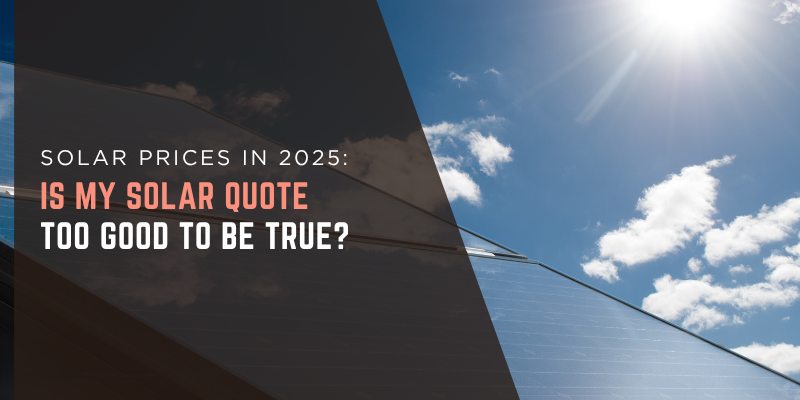Making Sense of Solar Project Pricing in 2025
With the scramble to install solar prior to the tax credit expiration at the end of 2025, homeowners are rushing to get quotes and secure their “place in line” for their projects. We spoke with the Energy Advisor team at solar.com, who work with homeowners to find qualified installers in their area, about what they’re seeing in the market.
Why is one of my solar quotes much lower than the market?
It’s common for solar.com customers to get additional quotes outside of our marketplace—and we applaud the due diligence! However, with One Big Beautiful Bill signed into law and the tax credit rush in full swing, our Energy Advisors are noticing a trend of customers bringing outside quotes that require a closer look.
“Right now, the biggest issue is with quotes that are ‘too good to be true,’” said Dan Huffman, a solar.com energy advisor based in Southern California. “I certainly can’t speak for any individual company’s pricing strategy at the moment, but the cost to install solar is relatively consistent. There have been some near-term component price increases, attributable to tariffs and increased demand, but certainly no one has decreased pricing. When I work with a homeowner who has a quote for a significantly lower price than the market, this tells me one of two things is happening: it’s simply too good to be true or the installer is struggling.”
Is my solar quote too good to be true?
On the first point, this is where basic due diligence comes into play. Perhaps the company itself is reputable—but maybe they’re trying to install obsolete components before the tax credit goes away. This could represent a great deal for the homeowner, but it could also mean the product is out of warranty or no longer supported by the original equipment manufacturer.
The other red flag is if the installer is asking for a large deposit to secure the work. There’s a chance that the work is never completed or the installer plans on building out their 2026 pipeline and, since they’re holding a large deposit, they feel the homeowner’s desire to cancel will be lower.
Is the installer struggling?
The other scenario is the installer might be struggling and with the upcoming tax credit elimination they’re simply trying to install what they can before they go out of business. Again, this could represent a great value for homeowners, but it also means they’re on their own if there’s an issue with the installation or components.
“Solar is an investment,” Huffman said. “And rarely do people invest in the lowest cost option. When thinking about a 20-25 year investment, which is what solar represents, savvy homeowners will pay a justifiable premium to work with quality technology and companies.”
Solar.com offers a Tri-Guard warranty, which provides an additional level of protection for homeowners looking to go solar. This means the company vets its installation partners and the technology they select, because ultimately they share in the risk if the system doesn’t work.
Why is Solar in the US so much more expensive than the rest of the world?
If you’ve done your research on solar, you likely have seen that if you were in Europe or Australia you can install solar on your house for $1 to $1.50/watt less than in the US. Why is that? Well, there are a few reasons. In the EU and Australia, through a combination of high retail energy rates and historical high subsidies, the economic imperative for homeowners to go solar was such that they “purchased solar.” In the US, in many locations, solar is sold, which creates significant inefficiencies in the market.
There’s also a relatively substantial cost differential in component prices. The US has placed tariffs and restrictions on products directly from mainland China, which impacts not only solar panels but also inverters. Chinese solar companies are operating at significant losses due to huge over capacity, which means solar panels and inverters can be purchased at a fraction of the cost in the US. There is also no code requirement for Module Level Rapid Shutdown, which opens up lower cost components and broader competition.
Many jurisdictions in the US also go through lengthy permitting and approval processes, which creates deal friction and adds cost.
In other markets, the combination of lower component prices, less regulation, and a higher consumer demand means homeowners simply outright purchase their solar, which removes the significant cost of financing many American consumers opt for.
So will we ever see $1.50/w residential installation prices in the US? Maybe. But the more likely scenario is there will be a huge spike in the cost of retail energy post OBBB, which means solar contractors can hold a premium if they’re offering a value relative to the grid.







